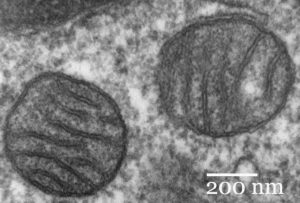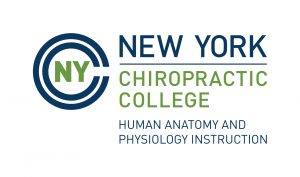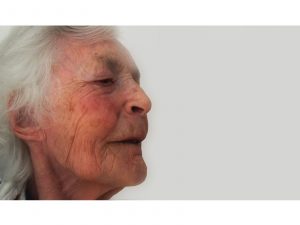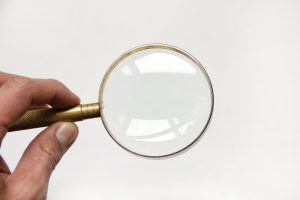Smooth Teaching with Slides: Animations to Dramatize the Story of Anatomy & Physiology | Science Updates | TAPP 89
Release Date: 03/18/2021
 Pulse of Progress: Looking Back, Moving Forward | TAPP 147
Pulse of Progress: Looking Back, Moving Forward | TAPP 147
The A&P Professor
In Episode 147, host Kevin Patton reviews the highlights and events of the previous year in the world of The A&P Professor. He then turns to last year's predictions for teaching human anatomy and physiology to see if he was on the right track. Finally, predictions for the coming year are revealed. And lots of other stuff—this episode is two hours long, after all! 0:00:00 | Introduction 0:00:50 | Debrief: Topics, Stats, Reflections 0:21:28 | A Long, Long, Long Episode 0:23:05 | Debrief: More Reviewing & Reflecting 0:38:59 | Did I Get My Predictions Right? 0:50:22 | Textbook &...
info_outline Anatomy of Trust: Promoting Integrity in A&P Education | Winter Shorts | TAPP 146
Anatomy of Trust: Promoting Integrity in A&P Education | Winter Shorts | TAPP 146
The A&P Professor
Episode 146 of The A&P Professor podcast is one of our winter shorts, where I replay interesting segments from previous episodes. In this one, we discuss the importance of academic integrity in the Anatomy & Physiology course. We emphasize the need to incorporate discussions about integrity in the syllabus and course materials and share real-life examples of violations in the healthcare field. We highlight how dishonesty can have serious consequences and discuss strategies for prevention, such as using multiple test versions and unique topics for papers/projects. Providing examples of...
info_outline A Tongue Twister's Guide to Mastering Anatomy Pronunciation | Winter Shorts | TAPP 145
A Tongue Twister's Guide to Mastering Anatomy Pronunciation | Winter Shorts | TAPP 145
The A&P Professor
Episode 145 of The A&P Professor podcast is one of our winter shorts, where I replay interesting segments from previous episodes. In this one, you'll hear about the trials and tribulations of teaching and learning pronunciations of anatomy and physiology terminology. Including why the instructor is ALWAYS correct! 00:00 | Introduction 01:07 | Variations in Anatomy & Physiology Pronunciations 10:24 | Say Anatomy & Physiology Terms Out Loud 20:30 | Staying Connected ★ If you cannot see or activate the audio player, go to: 🏅 Apply for your credential (badge/certificate)...
info_outline Dissecting the Kenhub Atlas: Insights from Editor Mike Pascoe | TAPP 144
Dissecting the Kenhub Atlas: Insights from Editor Mike Pascoe | TAPP 144
The A&P Professor
Mike Pascoe joins host Kevin Patton in Episode 144 to chat about Mike's experience in editing the new Kenhub Atlas of Human Anatomy. We go behind the scenes to see how this new kind of anatomy atlas was developed. Let's see how those decisions get made and how the learning perspective gets incorporated into anatomy manuals. And we explore diverse representation in anatomy images and why we won't find any eponyms in this atlas. We also have a brief remembrance of our friend David Allard. 00:00 | Introduction 00:45 | Remembering David Allard 04:25 | Introducing Mike Pascoe 06:12 |...
info_outline The One Teaching Strategy That Will Fix Your Anatomy & Physiology Course | TAPP 143
The One Teaching Strategy That Will Fix Your Anatomy & Physiology Course | TAPP 143
The A&P Professor
In episode 143 of The A&P Professor podcast for anatomy and physiology faculty, host Kevin Patton uncovers the super-secret, single, ultimate teaching strategy you need to keep your course tuned up and effective. He also revisits the "out there" transducer model of the brain and suggests a connection with a recent discovery supporting quantum wave activity in brain cell microtubules. Yes, quantum waves in the microtubules. Kevin also clarifies and expands on those wacky "extra" courses he described in Episodes 140 and 141. 00:00 | Introduction 00:51 | Clarifying Kevin's Wacky Supplemental...
info_outline Muscle: A Gripping Story by Roy Meals | TAPP 142
Muscle: A Gripping Story by Roy Meals | TAPP 142
The A&P Professor
Get pumped up for Episode 142, where we have the honor of hosting Dr. Roy Meals, the musculoskeletal maestro! 💪 We're gonna flex our curiosity muscles and explore every nook and cranny of his latest masterpiece, Muscle: The Gripping Story of Strength and Movement. This episode's so dynamic, you might need a protein shake afterward! 0:00:00 | Introduction 0:01:13 | Re-Introducing Dr. Roy Meals 0:04:08 | Muscle Strain & Why We Train 0:13:53 | What Sword Swallowing Teaches Us About Muscle 0:24:49 | Muscle Stories: Learning Should Be Fun 0:38:48 | Staying Connected...
info_outline Study Courses Supercharge Anatomy & Physiology Success | TAPP 141
Study Courses Supercharge Anatomy & Physiology Success | TAPP 141
The A&P Professor
Get ready for a mind-bending 😲 rendezvous with Kevin Patton in Episode 141, where he continues to spill the beans on his top-secret recipe for student triumph. 🏆 Brace yourself for this next adventure on his whirlwind tour of revolutionizing A&P 1 education, as we dissect the art of identifying student pain points, personalizing preparation, and serving up the kind of mentorship they've been yearning for! 0:00:00 | Introduction 0:00:45 | One of Two Success Courses 0:09:48 | Setting Up the Supplement Course 0:18:44 | Structure of Class Sessions 0:40:17 |...
info_outline Pre-A&P: A Refresher for Student Success in Anatomy & Physiology | TAPP 140
Pre-A&P: A Refresher for Student Success in Anatomy & Physiology | TAPP 140
The A&P Professor
In episode 140, we introduce the development of the pre-A&P course and the A&P1 Supplement course. These courses address the challenges faced by A&P students and improve their readiness and comprehension. In this first of two episodes, we focus on the pre-A&P course. It focuses on filling subject knowledge gaps with 10 modules and cumulative tests. Student surveys and studies show its effectiveness in achieving higher grades in the A&P 1 course. Implementing these nontraditional courses requires collaboration and support from advisors and faculty members. Together, we...
info_outline Thinking New Thoughts about the Human Brain | TAPP 139
Thinking New Thoughts about the Human Brain | TAPP 139
The A&P Professor
In Episode 139, we explore a new discovery in nerve signaling in the brain called a dendritic action potential (dCaAP), we look at a whacky proposed model of brain function, and we share some ideas about how we can help our students understand the core concepts of chemical signaling and signal transduction in different contexts. Put on your thinking caps and jump into this fresh episode now. 00:00 | Introduction 00:50 | Dendritic Action Potentials 12:16 | Transducer Model of the Brain 21:43 | Chemical Signals & Signal Transduction 35:09 | Staying Connected ★ If you cannot see or...
info_outline Dancing Organelles, AI Resources, Distracting Animations, Timed Tests & Micro-credentials | TAPP 138
Dancing Organelles, AI Resources, Distracting Animations, Timed Tests & Micro-credentials | TAPP 138
The A&P Professor
In Episode 138 of The A&P Professor podcast for anatomy & physiology faculty, host Kevin Patton discusses some new thinking about organelle function, why decorative animations are not a good idea in our teaching slides, news about Wendy Riggs and the 2023 HAPS President's Medal, why I don't like timed tests, resources for AI in the curriculum, and why micro-credentials are our friends. With all that, how is that we left out any mention of carbaminohemoglobin? 00:00 | Introduction 00:50 | Wendy Riggs Wins Big 04:173 | Curricular Resources for AI 08:55 | Timed Online Tests 24:12 |...
info_outlineHost Kevin Patton outlines several new discoveries, including the function of background noise in the brain, how exercise triggers immunity, a possible blood marker for longevity, and how mitochondria are organized during cell division. And he discusses how easy animation effects can help students focus on important elements of the story of anatomy and physiology.
- 00:00 | Quotation & Intro
- 00:47 | Brain's Background Noise
- 08:06 | Sponsored by AAA
- 09:12 | How Exercise Triggers Immunity
- 13:30 | Sponsored by HAPI
- 14:41 | Mitochondria During Cell Division
- 22:10 | Sponsored by HAPS
- 23:03 | How Old Will We Get
- 26:22 | Focus Our Story on Slides
- 35:22 | The Scoop About Segments
- 36:33 | Smooth Slides for a Smooth Story
- 43:56 | Staying Connected
If you cannot see or activate the audio player click here.
Apply for your credential (badge/certificate) for listening to this episode.
Please take the anonymous survey: theAPprofessor.org/survey
Questions & Feedback: 1-833-LION-DEN (1-833-546-6336)
Follow The A&P Professor on Twitter, Facebook, Blogger, Nuzzel, Tumblr, or Instagram!
We deal with our mind from morning till evening, and it can be our best friend or our worst enemy. (Mathieu Ricard)
Brain's Background Noise
7 minutes
The so-called "background noise" in an electroencephalogram (EEG)—that aperiodic data that contrasts with the periodic waves we usually look for—may be a measure of consciousness.
- Brain’s ‘Background Noise’ May Hold Clues to Persistent Mysteries (Quanta magazine article) my-ap.us/3lisLqW
- Most brain activity is "background noise" — and that's upending our understanding of consciousness (Salon magazine article) my-ap.us/30KWq2q
Sponsored by AAA
1 minute
A searchable transcript for this episode, as well as the captioned audiogram of this episode, are sponsored by the American Association for Anatomy (AAA) at anatomy.org.
Don't forget—HAPS members get a deep discount on AAA membership!
Sign up for the new VDD or Virtual Dissection Database. You can access it at www.virtualdissectiondatabase.com
How Exercise Triggers Immunity
4 minutes
We know that exercise has many beneficial effects in the body, including stimulation of the immune system. A new discovery in mice suggests that the same pressure that triggers bone growth with exercise also triggers the precursors to lymphocytes in bone marrow.
- Exercise generates immune cells in bone (article in Nature) my-ap.us/30JA4i5
Sponsored by HAPI Online Graduate Program
1 minute
The Master of Science in Human Anatomy & Physiology Instruction—the MS-HAPI—is a graduate program for A&P teachers, especially for those who already have a graduate/professional degree. A combination of science courses (enough to qualify you to teach at the college level) and courses in contemporary instructional practice, this program helps you be your best in both on-campus and remote teaching. Kevin Patton is a faculty member in this program. Check it out!
Mitochondria During Cell Division
7.5 minutes
We know how the nuclear genome is organized into two equivalent groups during cell division—at least the broad strokes. A new discovery sheds light on complex mechanisms that distribute the mitochondrial genome.
- Actin cables and comet tails organize mitochondrial networks in mitosis (article in Nature) my-ap.us/30J7cX4

Sponsored by HAPS
1 minute
The Human Anatomy & Physiology Society (HAPS) is a sponsor of this podcast. You can help appreciate their support by clicking the link below and checking out the many resources and benefits found there. Watch for virtual town hall meetings and upcoming regional meetings!
How Old Will We Get?
3 minutes
A study of 90- to 100-year-olds suggests that there's a blood marker that might give clues to our longevity.
- More than 100 centenarians help to reveal a biomarker for long life (news item in Nature) my-ap.us/2NlN8a9
- A neuronal blood marker is associated with mortality in old age (article in Nature Aging) my-ap.us/30Kxngf
Focus our Story on Slides
9 minutes
It's best to have few, if any, phrases of text on our teaching slides—so that students will focus on our orally presented story of anatomy and physiology. But when we do need more than a phrase or two—a term or two—then using simple animations to bring them in one at a time works well.
- Slides Serve the Story of Anatomy & Physiology | Episode 66
- PowerPoint: Animating Text and Objects (video) my-ap.us/30NBeZW
The Scoop About Segments
1 minute
Chunking. I use segments to divide the episode partly to give room for sponsor messages (thank you, sponsors!), but also to chunk the content so that it doesn't feel like you are drinking from a fire house. You know?... a bit of a cognitive "breather" before moving on to the next thing.
- How to use chapter markers in Apple’s Podcasts app (a how-to for flipping from segment to segment; also works similarly in other podcast platforms) my-ap.us/3bVFoVZ
Smooth Slides for a Smooth Story
7.5 minutes
Smooth and subtle animations for bringing in new slide elements work better that jarring "appear" animations or wildly sliding or jumping or scrolling animations. This is especially important when considering accessibility for those with motion-sensitive conditions. Smooth... that should be our mantra!
- The Golden Voice Behind All Those Ken Burns Documentaries (about Peter Coyote, mentioned in this episode) https://my-ap.us/3tranz1
If the hyperlinks here are not active, go to TAPPradio.org to find the episode page.
- More details at the episode page.
- Transcript available in the transcript box.
- Listen to any episode on your Alexa device.
- Need help accessing resources locked behind a paywall? Check out this advice from Episode 32 to get what you need! https://youtu.be/JU_l76JGwVw?t=440
Take The A&P Professor experience to the next level!
The A&P Professor community
Earn cash by referring other A&P faculty to this podcast:
theAPprofessor.org/refer
Tools & Resources
- Amazon
- Text Expander
- Rev.com
- Snagit & Camtasia
- Krisp Free Noise-Cancelling App
- The A&P Professor Logo Items
Sponsors
- Transcript and captions for this episode are supported by the American Association for Anatomy | anatomy.org
- The Human Anatomy & Physiology Society provides marketing support for this podcast | theAPprofessor.org/haps
- Distribution of this episode is supported by NYCC's online graduate program in Human Anatomy & Physiology Instruction (HAPI) | nycc.edu/hapi
Clicking on sponsor links helps let them know you appreciate their support of this podcast!
Follow The A&P Professor on Twitter, Facebook, Blogger, Nuzzel, Tumblr, or Instagram!
The A&P Professor® and Lion Den® are registered trademarks of Lion Den Inc. (Kevin Patton)
As an Amazon Associate I earn from qualifying purchases. I may be compensated for links to sponsors and certain other links.








